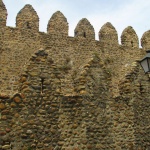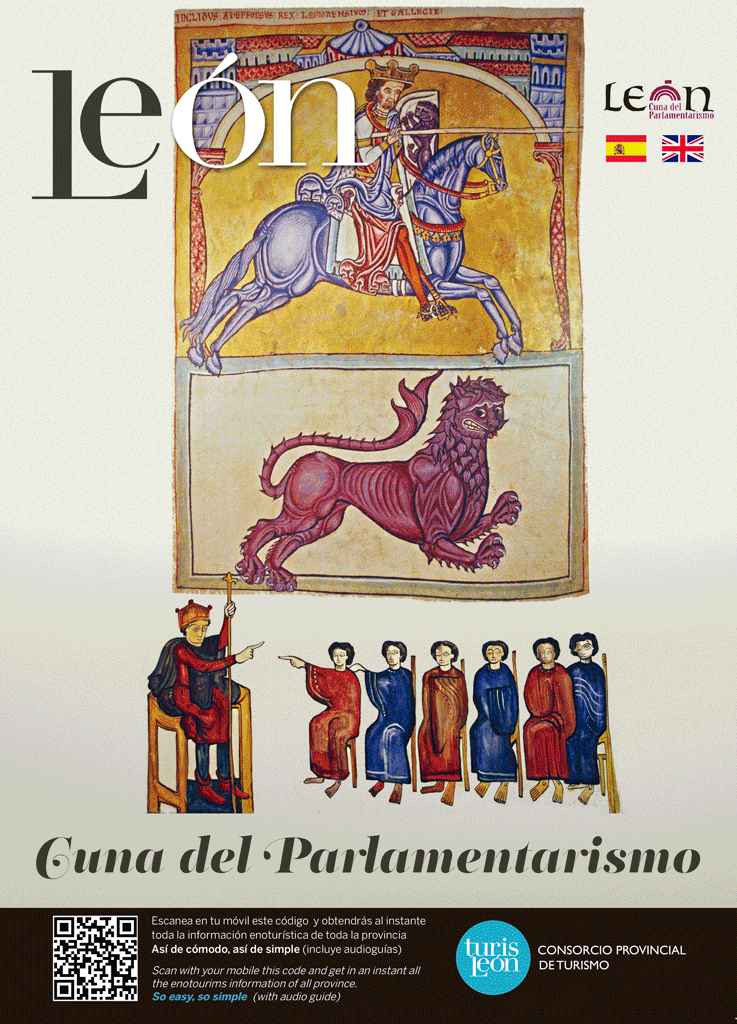ROMAN WALLS AND MEDIEVAL FENCE
City: León
Roman Wall
The traces of Roman and Medieval wars are still present in León as stone walls. The Roman camp Legio VI Vicrix was thought to have its own defense, but the oldest stone wall from which there are remnants currently is the one built at the end of the 1st century by Legio VII Gemina. A small section can still be seen at the stairs that connect Ramón y Cajal Avenue with San Isidoro Square.
Later on, at the end of the 3rd century, another more powerful wall was erected in front of the first one. It was raised on the Roman fences with cobblestone and mortar. The late Roman wall surrounded the enclosed camp with a triangular shape, having four gates in each of its sides. Known as “muralla de los cubos” (cube wall), it is slightly over five meters thick (16 - 17 ft), eight meters high (26 ft) and it has towers (“cubos” – cubes) with a canted, semicircular floor plan. These towers are located in small intervals from each other. The wall is still visible in a large part of the city, from the Ponce tower behind the Plaza Mayor to the Puerta Castillo and up to the Tower of San Isidoro.
The four older gates suffered the destruction caused by Almanzor in León, and they were re-built by Alfonso V. The only one still standing belongs with the North side of the enclosure, known since the Middle Ages as “Puerta Castillo” because of the stronghold located on one of the sides. The current structure corresponds with a reconstruction from the mid-18th century (1759) that replaced the previous one.
Medieval fence
The so-called “cerca medieval” (medieval fence) is a stretch of stone wall, built during the 14th century above an older one made of soil, from the 13th century. It surrounded the southern neighborhoods and the west of the city, areas outside the original camp from the Roman legion. Unlike the Roman military architecture, this fence does not follow a rectangular outline; instead, it draws an irregular arch that stems from and ends in the walled enclosure.
Nowadays, significant wall stretches can be found at Independencia Avenue and in Las Cercas Street. It is characterized by the paved corridor between a first, lower wall (“el antemuro” – the bulwark) and a second, higher, more robust wall (this is the actual wall). Both of them are provided with battlements that make them more eye-catching. Built entirely in lime and pebble masonry, it had nine gates: Escuderos or del Peso (next to the Tower Cuadrada or de los Ponce); Caño Badillo, behind the old quarters from the local police; Puerta Sol; Cal de Moros or Puerta de Santa Ana; Puerta Moneda, Puerta Gallega or de San Francisco; Puerta del Burgo Nuevo or Arco de Ánimas; Puerta de Fajeros and El Postigo de la Ollería, right next to the western stretch of the Roman wall.
IMAGES




